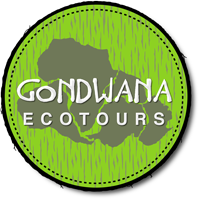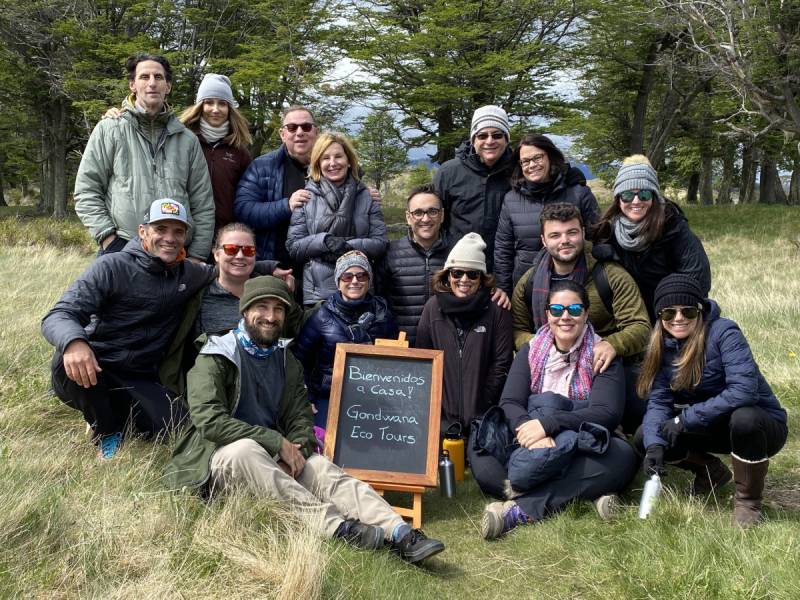We’re often asked about the meaning behind the name “Gondwana Ecotours”. The short answer is that we’re named after the ancient supercontinent, Gondwanaland. But this story spans millions of years and thousands of miles, culminating into the name, ethos, and mission that define who we are. Read on to find out more.
Why is Gondwana Ecotours named after Gondwanaland?
To answer this question, we decided to go straight to the source and ask our founder, Jared Sternberg, to share why he named the company “Gondwana Ecotours” and what it means to him. Here’s what Jared said:
“I first learned about the Gondwanaland supercontinent as a young adult when my brother, Aaron, brought me back a reggae album from a surf trip he went on in Chile. The band was called Gondwana, and they sang about love and unity. I was a fan of their music, and the idea of connection stuck with me.
“Around ten years later, I decided to start an international ecotourism company with the goal of connecting people and places to foster respect for natural and cultural diversity. When the time came to name the company, I immediately thought of Gondwanaland; Gondwana Ecotours was born.”

Jared Sternberg, Founder of Gondwana Ecotours
Gondwana Ecotours aims to bring people from different continents closer together, one trip at a time. By adventuring to faraway places as responsible travelers, we reconnect with one another and our planet, embodying the unity of Gondwanaland.
What is Gondwanaland?
The important thing to remember is that the continents we know today are only a temporary arrangement. They have transformed, joined together, and broken apart at different stages throughout Earth’s history.
Approximately 550 million years ago, the world looked very different. Note: this was even before the existence of what we now call the supercontinent “Pangaea”. Most of the Northern Hemisphere was covered by an ocean called “Panthalassa”. Whereas in the Southern Hemisphere, a huge landmass extended from the South Pole to the equator; a supercontinent scientists have named Gondwanaland.
The formation of Gondwanaland occurred over millions of years due to the collision of several ancient continents. The continental plates that would make up Gondwana slowly collided and merged, pushed together by powerful tectonic forces.
Gondwanaland covered nearly one-third of the Earth’s surface. Its climate was mild and the world was a warmer place. Primitive, multicellular organisms existed, and the fossil record shows examples of segmented worms and creatures resembling modern jellyfish.
Which continents and countries made up Gondwanaland?
Gondwanaland was an enormous and hugely diverse landmass. The supercontinent incorporated today’s South America, Africa, Australia, Antarctica, and India, without the oceans we’re familiar with today separating them. Parts of south and southeast Asia, and southern Europe were also either attached to the mainland or formed chains of islands. The remnants of Gondwanaland make up around two-thirds of today’s continental area.

The African continent, including Tanzania (pictured), was once part of Gondwanaland
What happened next?
After several million years, Gondwanaland collided with another supercontinent named “Laurasia” to form Pangaea. Laurasia was the supercontinent comprised of modern-day North America, Europe, and Asia (excluding India, which was part of Gondwanaland). When these two giants joined together, they stayed connected for approximately 200 million years.

A map of the continents of Gondwanaland and Laurasia 200 million years ago. Image attributed to Lennart Kudling, sourced from Wikimedia under the Creative Commons Attribution 3.0 Unported license.
When and why did Gondwanaland break apart?
Tectonic movement happens continuously, and just as these forces brought the two supercontinents together, they also split them apart. The breakup took several million years, but in the end, the two supercontinents separated again, although not in the same form as before. Over the following 30 million years, Gondwanaland split further into the continents we recognize today as South America, Africa, Australia, and Antarctica.
Where can you see evidence of Gondwana today?
Due to its expansive land area, Gondwana has a huge amount of biodiversity, and the varied biology of Gondwana can still be seen on Earth. Physical evidence of the existence of Gondwanaland includes fossils, glacial deposits, and rock layers.
Glacial deposits show similar flora and fauna in areas that are now on different continents but would have once been connected as part of Gondwanaland. These samples are not found in the Northern Hemisphere, suggesting that at some point these areas were connected to each other but not to the northern continents. The seed fern Glossopteris is particularly widely spread across previous Gondwanaland regions.
Geology also reveals similarities between different continents that speak to a physical bond in the past. The rock layers, or strata, that contain this evidence are the Karoo System in South Africa, the Gondwana System in India, and the Santa Catharina System in South America.
In the 1960s, the theories of plate tectonics and continental drift gained popularity and are now widely accepted as the explanation for the evidence of Gondwanaland’s existence.
The Future
One of the most fascinating aspects of the story of Gondwanaland is that it is an ongoing tale. Science has established that the formation of supercontinents is cyclical. This means that in hundreds of millions of years, the Earth’s surface may look very different than it does now, as the continents keep drifting across its surface. In fact, there could be another Gondwanaland or even a completely different combination of continents someday in the future.
An exciting recent development in this story is that Earth’s eighth continent, “Zealandia”, has been mapped. Zealandia is a continent that was part of Gondwanaland, but over time has mainly been lost to the sea. New Zealand and some nearby islands make up the most recognizable above-water portion of Zealandia. For many years, research teams have been using rock samples from the seabed to analyze the undersea geology of Zealandia. Geologists have now mapped Zealandia in its entirety; nearly two million square miles of underwater land mass.
So, what’s in a name?
Hopefully that covers the “Gondwana” portion of our name, but what about “Ecotours”? Ecotourism is traveling responsibly to natural areas. We achieve this by making environmentally-friendly choices, working with locally-owned organizations, and creating knowledge and understanding through education. That’s what makes “Gondwana Ecotours” such a perfect name for us; both parts of our name reflect our mission to bring people together and to take care of one another and our planet.

Patagonia, and all of South America, was once part of the Gonwanaland supercontinent
Resources
- https://www.gondwanaecotours.com/travel-journal/a-history-of-life-what-is-gondwana/
- https://www.popularmechanics.com/science/environment/a45226285/eighth-continent-zealandia-mapped/
- https://museum.wales/articles/1057/Lost-worlds-of-Gondwana-/
- https://www.zmescience.com/science/geology/what-is-gondwana/
- https://www.britannica.com/place/Gondwana-supercontinent#:~:text=The%20concept%20of%20Gondwana%20was,and%20Polarstar%20formations%20of%20Antarctica.
- https://www.popularmechanics.com/science/environment/a45226285/eighth-continent-zealandia-mapped/

